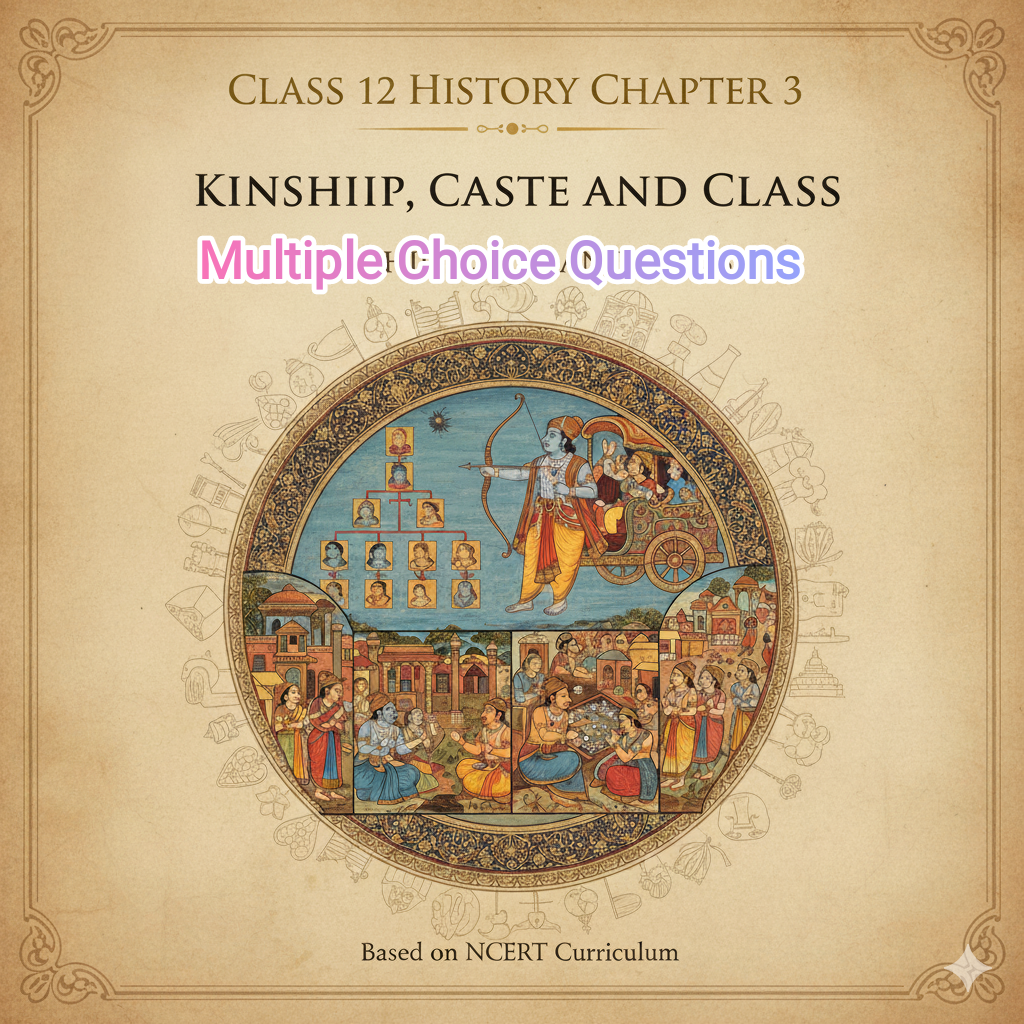1. Match the items of Column I with Column II:
Column I ____________________Column II
A First Buddhist Council______(1) Kashmir
B. Second Buddhist Council__(ii) Pataliputra
C. Third Buddhist Council____(iii) Rajagriha
D.Fourth Buddhist Council___(iv) Vaishali
Choose the correct answer.
(a) A – (iv) B-(i), C – (iii) D – (ii)
(b) A – (i) B – (ii) C – (iv) D – (ii)
(c) A – (ii) B-(i), C-(iv), D-(iii)
(d) A-(iii), B – (Iv) C-(ii), D – (i)
Ans. (d) A-(iii), B-(iv), C – (ii) , D – (i)
Explanation:
The traditional locations recorded for the councils are: 1st Council — Rajagriha (Rājagṛha), 2nd Council — Vaiśālī, 3rd Council — Pāṭaliputra, 4th Council — Kashmir. So mapping A→(iii), B→(iv), C→(ii), D→(i) is correct.
2. Which of the following ancient texts is also known as the ‘Book of Chants’?
(a) Rig Veda
(b) Sama Veda (c) Yajur Veda
(d) Atharva Veda
Ans. (b) Sama Veda
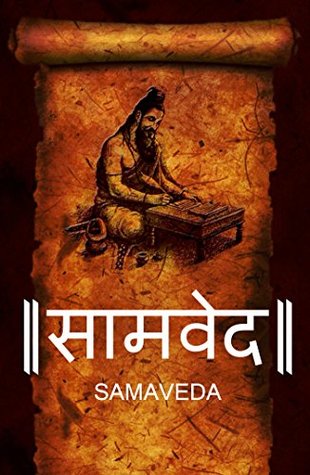
Explanation:
The Sama Veda is essentially a collection of Vedic chants and melodies used in rituals; hence it’s called the “Book of Chants.” Rig Veda supplies many of the hymns, but Sama Veda arranges them for singing.
3. How many forms of marriage were recognized by the ‘Dharmasutras’?
(a) Six forms
(b) Seven forms
(c) Eight forms
(d) Nine forms
Ans. (c) Eight Forms
Explanation:
The Dharmasūtras and later Dharmashastras list eight classical forms of marriage: Brahma, Daiva, Arsha, Prajapatya, Gandharva, Asura, Rakshasa, and Pāishācha. This classificatory scheme is what the standard answer refers to.
4. Which of these inscriptions belonged to the famous Saka ruler ‘Rudradaman’?
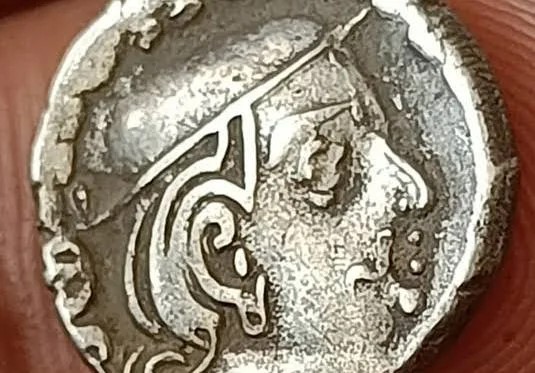
(a) Allahabad Rock Inscription
(b) Junagadh Rock Inscription
(c) Mehrauli Rock Inscription
(d) Amaravati Rock Inscription
Ans. (b) Junagadh Rock Inscription
Explanation:
Rudradaman’s Junagadh (Girnar) rock inscription famously records his repair of Sudarśana lake and other achievements. The Allahabad inscription is associated with Samudragupta and others; Amaravati is different.
5. Identify the dynasty with the help of a given set of hints:
I They generally ruled over the Southern areas of India.
I They generally adopted the name of their mothers.
(a) Kushanas
(b) Shakas
(c) Satavahanas
(d) Chalukyas
Ans. (c) Satavahanas
Explanation:
The Satavahanas (Deccan dynasty) often used matronyms (examples: Gautamiputra Satakarni — “Gautami” being his mother). They were primarily southern/deccan rulers.
6. Which of the following rulers rebuilt Sudarshana lake
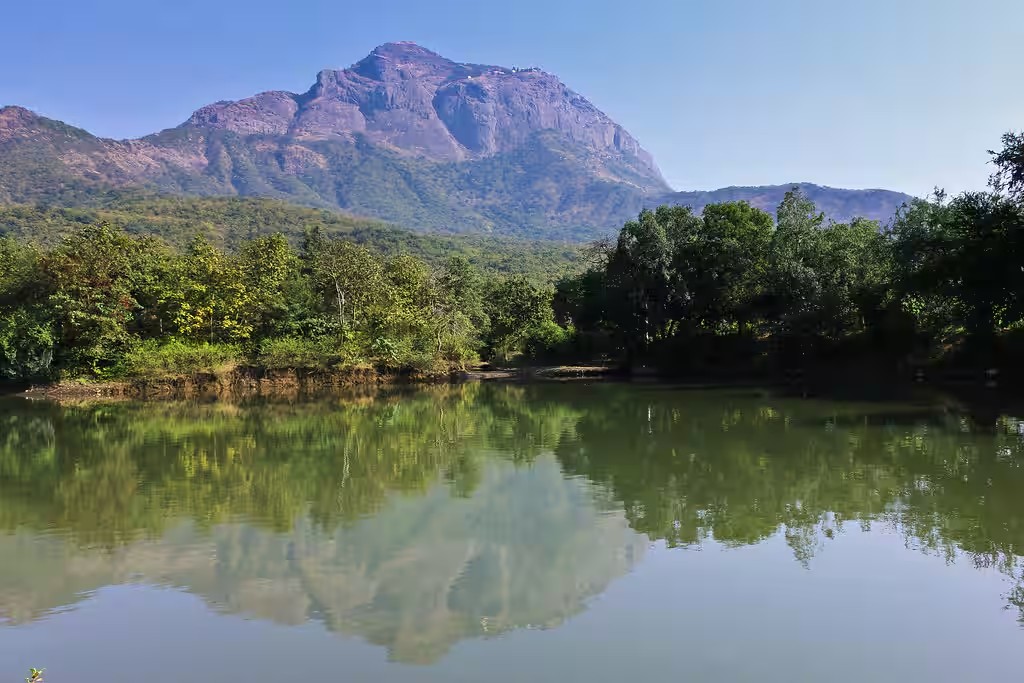
(a) Gotami-puta Siri-Satakarni
(b) Rudradaman
(c) Ashoka
(d) Harsha
Ans. (b) Rudradaman
Explanation:
Rudradaman’s Junagadh inscription records that he repaired/rebuilt the Sudarśana reservoir—this is a well-known epigraphic fact.
7. Which of the following is the oldest Upanishads?
(a) Brihadaranyaka Upanishad
(b) Aitreya Upanishad
(c) Chandogya Upanishad
(d) Katha Upanishad
Ans. (a) Brihadaranyaka Upanishad
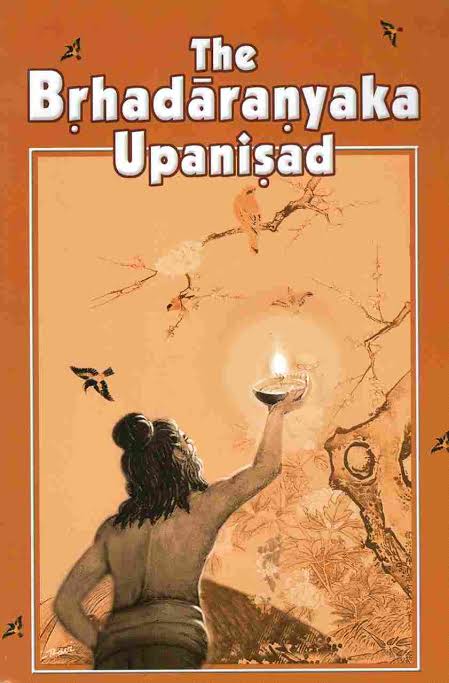
Explanation:
The Bṛhadāraṇyaka Upaniṣad is considered one of the earliest and largest Upaniṣads, containing foundational philosophical discussions.
8. What category of people were known as ‘Mlechchhas’?
(a) Sanskrit Speakers
(b) Non-Sanskrit Speakers
(c) Tamil Speakers
(d) Pali Speakers
Ans. (b) Non-Sanskrit Speakers
Explanation:
Mleccha(h) was a broad term in ancient texts used for outsiders/foreigners or those not following Sanskrit norms—often non-Sanskrit speakers.
9. Consider the following statements regarding the access to property and land:
1. Stridhana was the gifts of land and property that women received on the occasion of their marriage.
II. Stridhana was inherited by the woman’s children but the husband had no claim on it
Which of the statements given above islare not correct?
(a) I only
(b) II only
(c) Both I and II
(d) Neither l not ll
And. (C) Both l and ll
Ans. (c) Both I and II (NOT correct)
Explanation:
The term strīdhana primarily referred to movable gifts and personal property given to a woman (jewellery, cash, moveable items)—not usually immovable land. Also, husbands often exercised control over some of these possessions in practice; children could inherit some items later, but it is incorrect to say stridhana was strictly land and strictly beyond the husband’s claim. So both statements are not correct as stated.
10. Identify the character of Mahabharata using the hints given below:
I He was blind.
I He was the father of Duryodhana.
(a) Pandu
(b) Bheeshma
(c) Dhritarashtra
(d) Ans. (c) Dhritarashtra
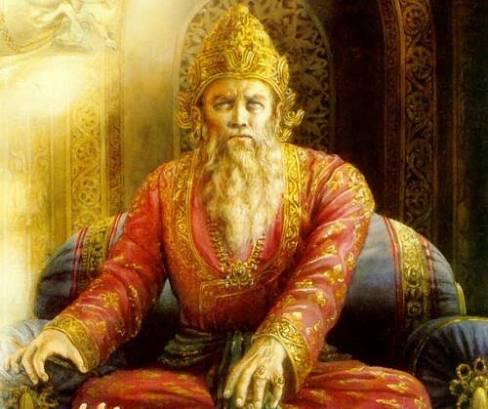
Explanation:
Dhṛtarāṣṭra was the blind Kuru king and the father of the Kaurava princes including Duryodhana.
11. Which of the following regions was not a Mahajanapada?
(a) Avanti
(b) Vatsa
(c) Malla
(d) Amaravati
Ans. (d) Amaravati
Explanation:
The classical list of Sixteen Mahājānapadas includes Avanti, Vatsa, Malla, etc., but Amaravati (the Buddhist site) is not one of the sixteen Mahajanapadas of the early historic period.
12. The early Buddhist texts known as the ‘Tripitaka’ were written in which of the following languages?
(a) Sanskrit
(b) Prakrit (c)
Pali
(d) Magadhi
Ans. (c) Pall (intended: Pali)
Explanation:
The early canonical Buddhist texts known as the Tripiṭaka (Vinaya, Sutta, Abhidhamma) were preserved in Pali (the Pali Canon) in the Theravada tradition. (Note: the option list shows “Pali”—that is the correct choice.)
13. Who is the author of one of the oldest Sanskrit grammar book ‘Ashtadhyayi’?
(a) Shudraka
(b) Charaka
(c) Panini
(d) Vasumitra
Ans. (c) Panini
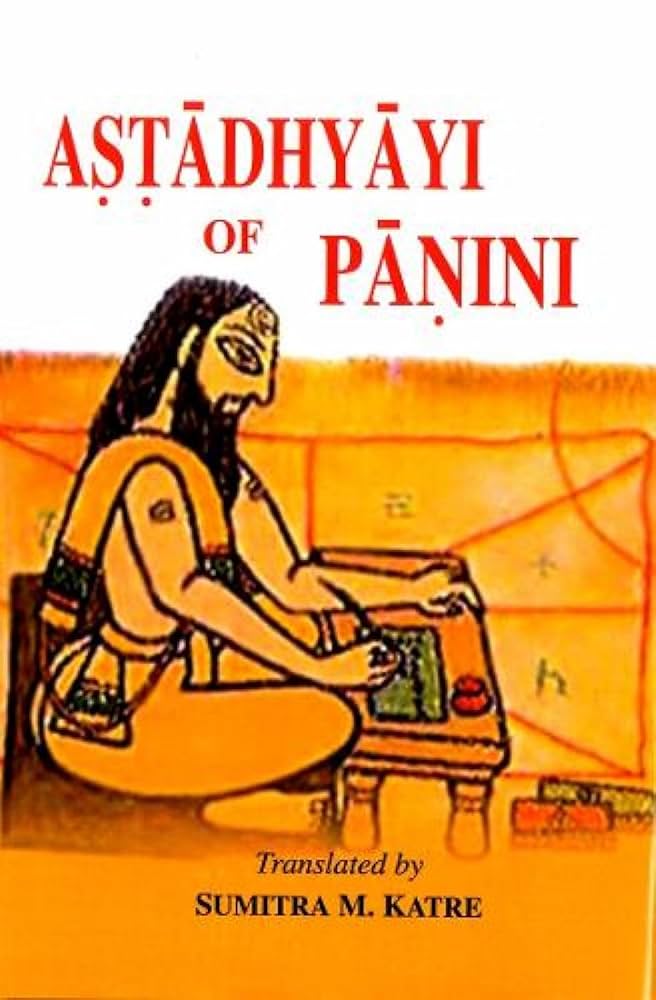
Explanation:
Pāṇini authored the Aṣṭādhyāyī, a concise and systematic grammar of Sanskrit, which is a cornerstone of classical linguistics.
14. Which among the following is the largest Parva (chapter) in Mahabharata?
(a) Bhishma Parva
(b) Shanti Parva
(c) Sabha Parva
(d) Virata Parva
Ans. (b) Shanti Parva
Explanation:
The Śānti Parva is the longest single book (parva) within the Mahābhārata, containing extensive moral, juridical and philosophical discussions.
15. What is the meaning of the Sanskrit word ‘Jnati’?
(a) Family
(b) Network of kinfolk
(c) Lineage
(d) Caste
Ans. (b) Network of kinfolk
Explanation:
In Sanskrit usage, kula = family, jnati = a wider network of kin or kinfolk, and vamsha = lineage. So jnati denotes the larger kin network.
16. Consider the following statements about the ‘gotra’.
1. Women needs to adopt the gotra of their husbands and gave up their father’s gotra after marriage.
II. The members of the same gotra generally did not marry each other.
Choose the correct option.
(a) Only I
(b) Only II
(c) Both I and II
(d) Neither I nor II
Ans. (c) Both I and II
Explanation:
In classical gotra rules, women adopted their husband’s gotra after marriage and marriage within the same gotra (gotra exogamy) was typically avoided to prevent close-kin unions.
17. Consider the following statements about the types of marriages in ancient times:
1.Exogamy is the type of marriage that takes place outside the Kin.
II. Endogamy is the type of marriage that takes place within the unit.
III. Polygyny is the practice of a woman having several husbands.
Which of the following is correct?
(a) I and II
(b) I and III
(c) I, II and III
(d) Only I
Ans. (a) I and II
Explanation:
Exogamy = marrying outside one’s kin; endogamy = marrying within one’s group. Statement III is wrong: polygyny is a man having multiple wives; polyandry is a woman having multiple husbands.
18. The famous text ‘Mrichchhakatika’ was written by which of the following writers?
(a) Kalidasa
(b) Shudraka
(c) Sushruta
(d) Nagasena
Ans. (b) Shudraka
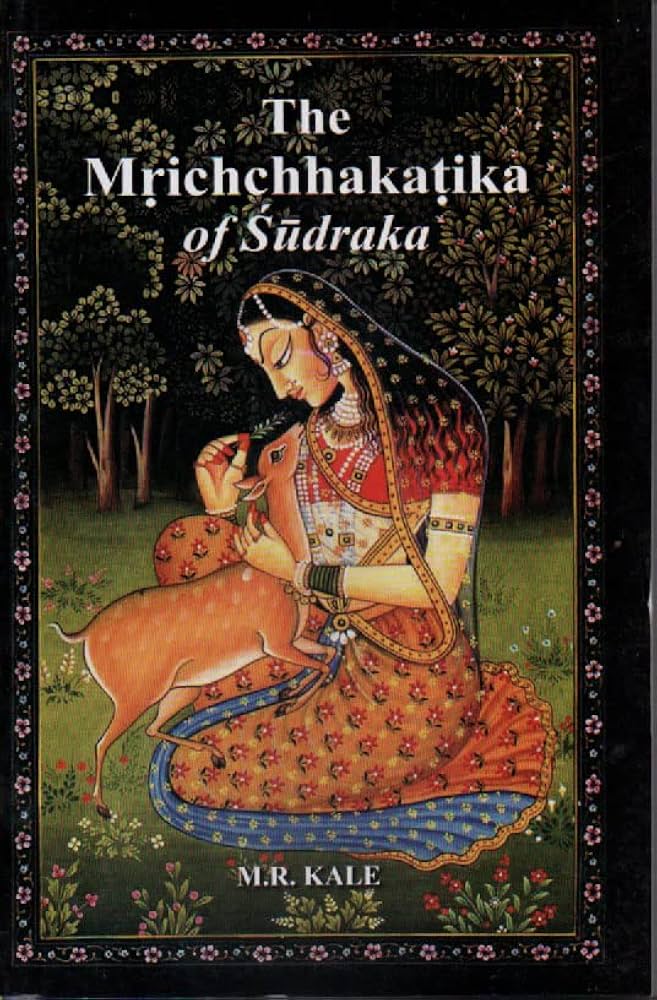
Explanation:
Śūdraka is traditionally credited with the Sanskrit play Mṛcchakaṭika (“The Little Clay Cart”), a celebrated dramatic work.
19. What does the term “Endogamy” mean?
(a) Marriage among people belonging to different groups.
(b) Marriage among people belonging to the same group.
(c) Marriage among people belonging to different religions.
(d) Marriage among same sex people.
Ans. (b) Marriage among people belonging to the same group.
Explanation:
Endogamy means marriage within one’s social, caste, or community group (opposite of exogamy).
20. Indra was the God of
(a) Fire
(b) Valour, Warfare and Rain
(c) Money
(d) Agriculture
Ans. (b) Valour, Warfare and Rain
Explanation:
In the Vedic pantheon Indra is the warrior-hero god associated with valor, warfare and the possession of rains/storms—a key deity in the Rigveda.
21. Which among the following groups was at the lowest level of the social order?
(a) Vaishyas
(b) Shudras
(c) Kshatriyas
(d) Brahamanas
Ans. (b) Shudras
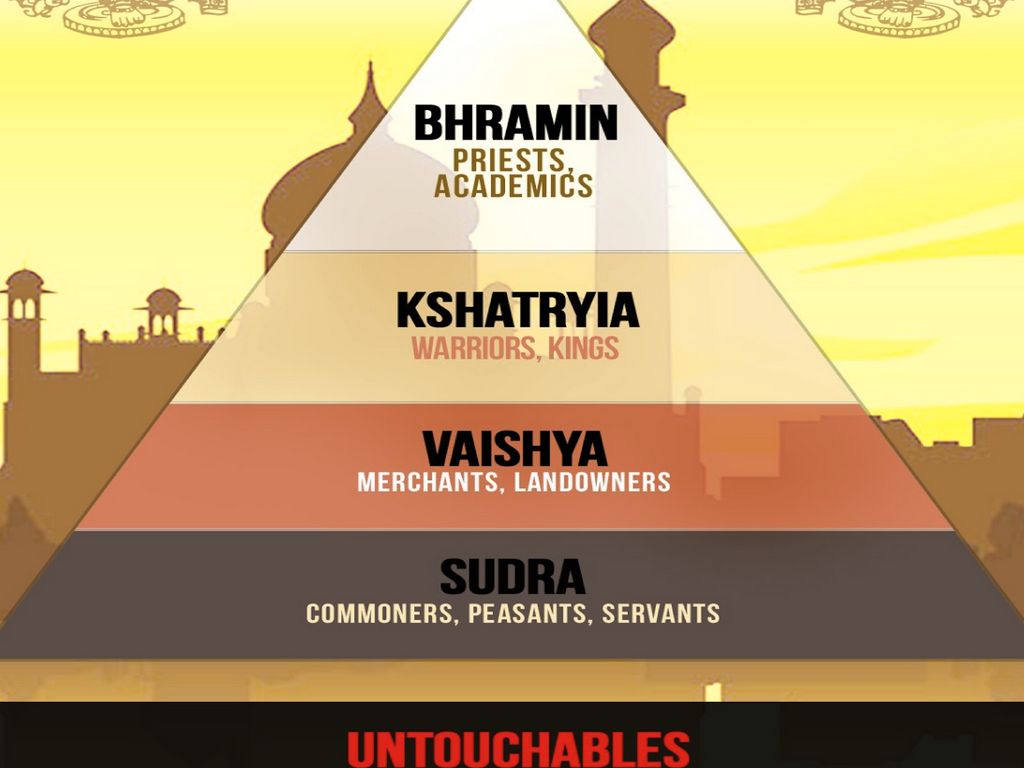
Explanation:
In the classical varna hierarchy, Śūdras were located lowest among the four varnas (Brahmana, Kshatriya, Vaishya, Shudra), assigned service occupations.
22. Choose the incorrect ruler of the given cities from the following options:
(a) Parikshit: Kuru Kingdom
(b) Kashi: Ajatshatru
(c) Janaka: Mithila
(d) Pushyamitra Sunga: Avanti
Ans. (d) Pushyamitra Sunga: Avanti
Explanation:
Pushyamitra Sunga was associated with Magadha (founder of the Sunga dynasty), not Avanti. Avanti’s famous centers were Ujjain/Mahishmati.
23. What is the capital of the Mahajanapada ‘Koshala’?
(a) Kaushambi
(b) Ayodhya
(c) Mathura
(d) Vaishali
Ans. (b) Ayodhya
Explanation:
Koshala had Ayodhyā (Ayodhya) as its principal capital in early sources; it is consistently associated with that city.
24. As per the Brahamanas, the Varna system derived its legitimacy from which among the following options?
(a) God
(b) Society
(c) Administration
(d) Kings
Ans. (a) God
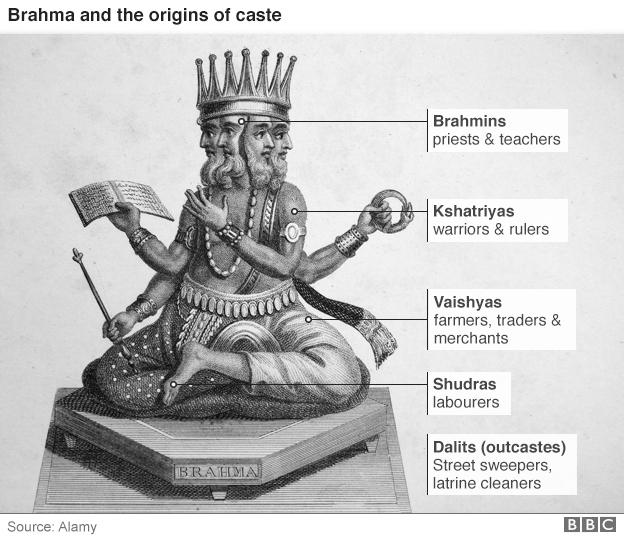
Explanation:
Brahmanical texts (e.g., the Purusha Sukta) present varna as a cosmic/divinely ordained order, linking social roles to divine origins — hence legitimacy by “God.”
25. Ahichchhatra temple belonged to which of the following states?
(a) Madhya Pradesh
(b) Uttar Pradesh
(c) Andhra Pradesh
(d) Himachal Pradesh
Ans. (b) Uttar Pradesh
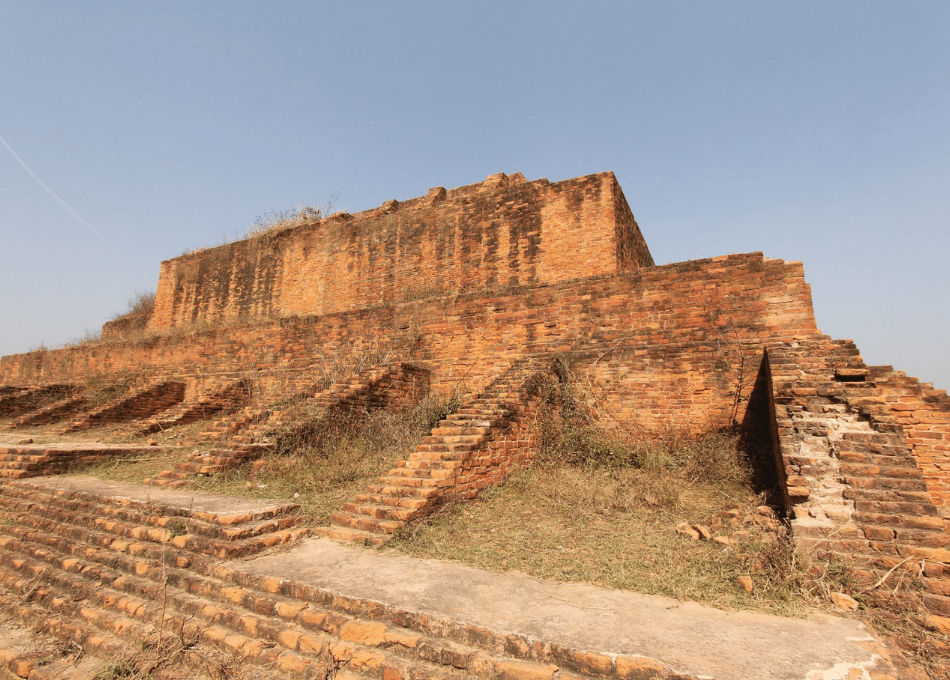
Explanation:
Ahicchatra is an archaeological site in modern Uttar Pradesh (near Bareilly), known for early historic remains and temples.
26. Consider the following statements:
- According to the Manusmriti, Women could not claim a share in the resources.
- The daughters were not preferred to marry outside the kin: exogamy was not preferably practised.
Which of the statements given above is/are not correct?
(a) 1 only
(b) 2 only
(c) Both 1 and 2
(d) Neither 1 nог 2
Ans. (b) 2 only
Explanation:
Statement 1: Manusmriti did restrict women’s property rights in many contexts (so statement 1 is not fully false in the frame of classical text). Statement 2: exogamy (marrying outside kin) was indeed practiced and often required by gotra rules, so statement 2 as stated is incorrect. Therefore 2 only is not correct.
27. Which of these rituals took place during the consecration ceremony of the Kings?
(a) Rajasuya Ritual
(b) Vajapeya Ritual
(c) Asvamedha Ritual
(d) Agnishtoma Ritual
Ans. (a) Rajasuya Ritual
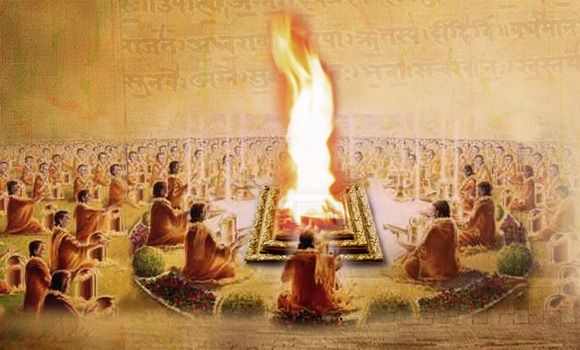
Explanation:
The Rājāśa/Rajasuya sacrifice was closely associated with royal consecration and supremacy—a coronation/imperial ritual. (Asvamedha could also symbolize sovereignty in other contexts, but classic MCQ answer here is Rajasuya.)
28. The Shaka rulers came to India from which of the following places?
(a) China
(b) Central Asia
(c) Africa
(d) Korea
Ans. (b) Central Asia
Explanation:
The Śakas (Scythians) were steppe/central-Asian groups who migrated into northwest India from Central Asia.
29. The famous work on drama ‘Natyashastra’ is written by which of the following personalities?
(a) Kalidasa
(b) Varahamihira
(c) Bharata
(d) Amoghavarsha
Ans. (c) Bharata
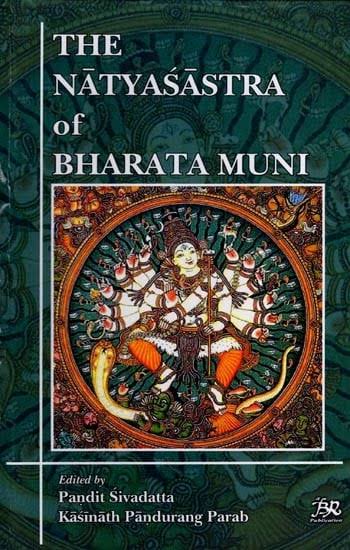
Explanation:
Bharata Muni is credited with the Nāṭyaśāstra, the classical treatise on dramaturgy, stagecraft and aesthetics.
30. Who were ‘Nishadas’?
(a) People living in the forests.
(b) People living in the towns.
(c) People living in the royal houses.
(d) People living in the mountains.
Ans. (a) People living in the forests.
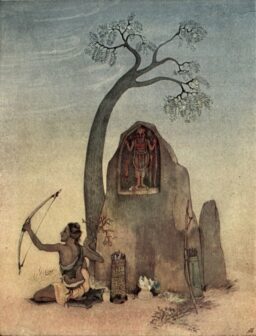
Explanation:
Nishadas denote certain tribal or forest-dwelling groups in early texts, often outside the settled four-varna scheme.
31. Who wrote the famous book ‘Indica’?
(a) Kautilya
(b) Megasthenes
(c) Visakhadatta
(d) Pliny
Ans. (b) Megasthenes
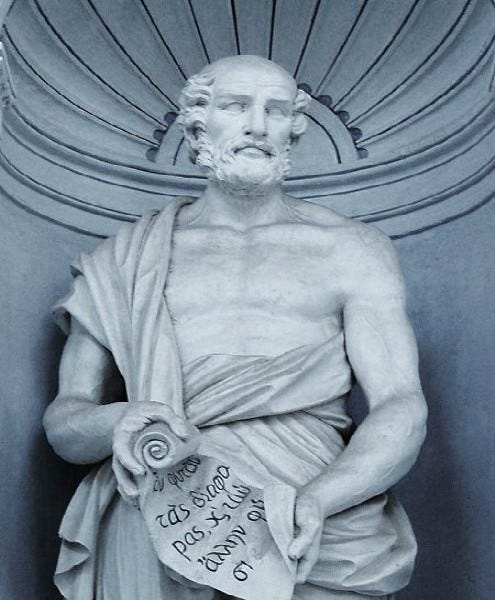
Explanation:
Megasthenes, the Greek ambassador to Chandragupta Maurya’s court, authored Indica, an early Greek account of India.
32. ‘Manusmriti’ is written in which of the following languages?
(a) Tamil
(b) Telugu
(c) Sanskrit
(d) Pali
Ans. (c) Sanskrit
Explanation:
Manusmriti (Mānava-Dharmaśāstra) was composed in Sanskrit (circa 200 BCE–200 CE in form).
33. The epic ‘Mahabharata’ was written by which of the following personalities?
(a) Valmiki
(b) Ved Vyasa
(c) Tulsidas
(d) Surdas
Ans. (b) Ved Vyasa
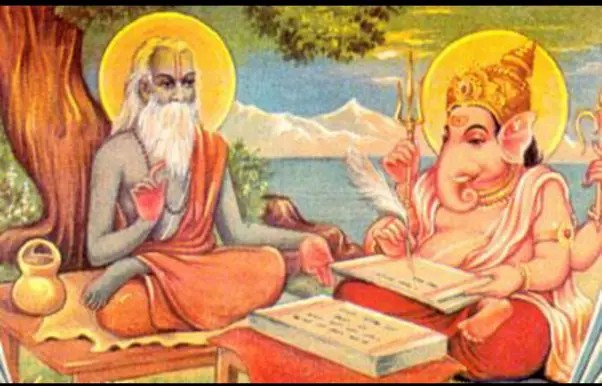
Explanation:
Vedavyāsa is the traditional author/compiler of the Mahābhārata.
34. Which of the following capitals is not correctly matched?
(a) Malla: Pava
(b) Vatsa: Kaushambi
(c) Kosala: Ayodhya
(d) Avanti: Rajgir
Ans. (d) Avanti: Rajgir
Explanation:
Avanti’s prominent capitals were Ujjain (Ujjayini) and Mahishmati, not Rajgir. Rajgir was associated with Magadha.
35. Choose the odd one out from the following match columns:
(a) Brahamanas: Vedic knowledge
(b) Kshatriyas: Warriors
(c) Vaishyas: Merchants
(d) Shudras: Landowners
Ans. (d) Shudras: Landowners
Explanation:
Shudras were traditionally assigned service and labour roles, not landowning/merchant roles; hence (d) is the odd one.
36. Identify this character from the Mahabharata using this set of hints:
I He belonged to the Nishada community.
I He sacrificed his thumb to Guru Drona.
(a) Arjuna
(b) Karna
(c) Eklavya
(d) Virata
Ans. (c) Eklavya
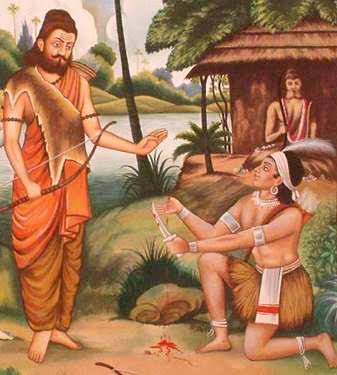
Explanation:
Eklavya, a Nishada boy, gave his thumb to Drona as a guru-dakṣiṇa and therefore could not practice archery thereafter.
37. Consider the following statements about acquiring wealth according to the Manusmriti:
I. A men has seven means of acquiring wealth.
II. A woman has five means of acquiring wealth.
III. A woman has no right over the family property.
Which of the following statements are true:
(a) I and II
(b) I and III (c) I, II and III
(d) II and III
Ans. (b) I and III
Explanation:
Classical Manu passages outline seven means for men to acquire wealth (including trade, inheritance, gifts, etc.). The statement about women having five means is not a reliable rendering in standard Manu formulations; Manusmriti also restricts women’s rights regarding property compared to men—hence I and III are regarded as the correct pair in the context of this MCQ.
38. The term ‘Kula’ used in Sanskrit texts specifically refers to which of the following?
(a) Family
(b) Kinfolk
(c) Lineage
(d) None of these
Ans. (a) Family
Explanation:
Kula denotes the family; jnati is used for wider kinfolk and vamsha for lineage.
39. Consider the following statements:
I The capital of the Satavahanas was at Paithan, Maharashtra.
II. The founder of the dynasty was Simuka.
III. The official language of the kingdom was Pali.
Choose the correct answer:
(a) I and II
(b) I and III
(c) I, II and III
(d) Only I
Ans. (a) I and II
Explanation:
The Satavahana capital at one point was Paithan (Pratishthana), and Simuka is considered an early founder. Their administrative language was Prakrit (local Prakrit dialects), not Pali, so III is incorrect.
40. Choose the odd one out from the following:
(a) Mahabharata: Sanskrit
(b) Tripitakas: Pali
(c) Agamas: Prakrit
(d) Ramayana: Hindi
Ans. (d) Ramayana: Hindi
Explanation:
The Rāmāyaṇa was composed in Sanskrit (Valmiki), not in modern Hindi; that makes (d) the odd/wrong pairing.
41. Charaka and Sushruta Samhitas are the famous works on which of the following subjects?
(a) Astronomy
(b) Medicine
(c) Mathematics
(d) Literature
Ans. (b) Medicine
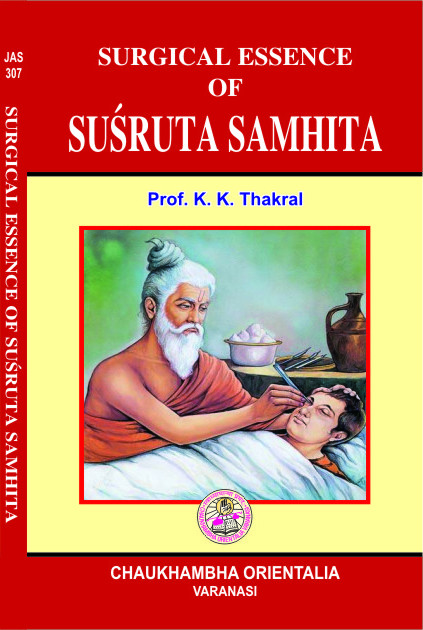
Explanation:
Caraka Saṃhitā and Suśruta Saṃhitā are classical Ayurvedic treatises—medicine and surgery respectively.
42. What occupation was assigned to the ‘Chandalas’?
(a) Cleanliness of pits
(b) Handling corpses and dead animals
(c) Construction of warehouses
(d) Cleaning roads
Ans. (b) Handling corpses and dead animals
Explanation:
Chandalas were typically associated with occupations seen as ritually impure, such as handling corpses and disposing of dead animals.
43. Consider the following statements:
I. The Manusmriti, was compiled between c. 200 BCE and 200 CE.
II. Faced with this challenge, the Brahmanas responded by laying down codes of social behaviour in great detail which were meant to be followed by Brahmanas in particular and the rest of society in general.
III. From c. 500 BCE, these norms were compiled in Sanskrit texts known as the Dharmasutras and Dharmashastras.
Which of the statements given above is/are correct?
(a) I Only
(b) II Only
(c) I, II and III
(d) III Only
Ans. (c) I, II and III
Explanation:
All three statements are accepted in mainstream summaries: (I) Manusmriti’s final form is placed roughly c. 200 BCE–200 CE; (II) Brahmanical leaders produced prescriptive codes of conduct; (III) Dharmasūtras and Dharmashāstras started appearing from around 500 BCE onwards as compilations of norms.
44. According to the Shastras, the right of kingship was entitled to which of the following?
(a) Kshatriyas only
(b) Brahmanas and Kshatriyas only
(c) Anyone who could muster support and resources
(d) Anyone among the Brahmanas, Kshatriyas and Vaishyes who could muster support and resources
Ans. (a) Kshatriyas only
Explanation:
According to orthodox Dharmaśāstra prescriptions, kingship was the domain of Kshatriyas—i.e., the warrior/royal varna—though historical practice often varied.
